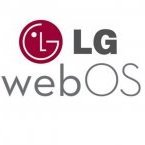Palm Touchstone Chargers
-
Similar Topics
-
By News Reporter
Texas Production Factory to Solidify Company’s Position
as a Trusted EV Charging Solutions Provider
SEOUL, Jan. 15, 2024 — LG Electronics (LG) has expanded its electric vehicle (EV) charging solutions infrastructure, opening its first EV charger production factory in the U.S. The new, 5,500-square-meter facility, located in Fort Worth, Texas, will focus on delivering chargers for the North American market and is expected to have an annual capacity of more than 10,000 units.
The factory is LG’s first EV charger production site outside of South Korea, where the company last year opened an EV charger manufacturing operation under its affiliated company HiEV Charger.
LG chose to establish its U.S.-based EV charger production factory in Texas for multiple, strategic reasons, such as the ability to utilize existing facilities. The state also boasts excellent logistics and transportation networks and is home to major operations for companies in industries ranging from automobile manufacturing to finance.
In 2023, when announcing the company’s future vision, LG CEO William Cho noted that ‘Electrification’ would be a major driver of rapid mid- to long-term growth. LG’s entry into the U.S. EV charging market will enable the company to address rising local demand and discover new business opportunities. Strategically and philosophically aligned with several of the energy and environmental goals set out in the U.S. government’s Inflation Reduction Act, the sustainability-focused company is committed to bolstering its EV charger business, and has commenced plans to grow its presence around the world, including in Asia and Europe.
LG has started assembling 11kW chargers at its Texas factory and will begin production of 175kW fast chargers within the first half of the year. LG also aims to introduce a 350kW ultra-fast charger in 2024, expanding its EV charger lineup to meet the varied needs of customers, especially those operating in areas such as commercial travel and long-distance transportation.
The company is quickly earning a reputation as a reliable EV charger provider thanks to its manufacturing capabilities, quality control and after-sales service. Through emphasizing its differentiated offerings, including control and advertising solutions, LG is confident that the EV charging solutions business will continue to improve its market position over the mid- to long-term.
Furthermore, LG intends to tap into the diverse EV charging demands of various businesses and facilities, such as hotels, shopping malls, retail stores, gas stations and parking garages, to drive future growth. LG’s B2B experience in the U.S. hotel TV and digital signage sectors provides valuable insight that is expected to aid in the U.S. expansion of the company’s EV charging solutions business.
The global EV charging market is expected to grow to USD 186 billion by 2030, according to Roland Berger, a global management consulting firm. The market expansion is being driven by several factors, including the ongoing implementation of regulations aimed at protecting the environment and the continuous progress of vehicle electrification.
“By establishing our EV charger production factory in Texas, we will be able to actively respond to the rapidly growing demand for EV infrastructure in the U.S.,” said Jang Ik-hwan, president of the LG Business Solutions Company. “LG is dedicated to delivering uncompromising quality and will offer customers reliable EV charging solutions that combine efficient charger units with advanced control systems.”
# # #
link hidden, please login to view -
By News Reporter
TCL is resurrecting the Palm brand with a brand-new Palm, Inc. based in California. As we reported last week,
link hidden, please login to view late last year, although at the time it wasn't clear what the company had planned. It's not at all clear what TCL intends to do with the Palm brand, although they seem to recognize the history that the brand carries. Says TCL:
Palm has always carried a lot of affect and emotions. That's why TCL has set the direction to rebuild the brand involving Palm's very own community, making it the largest scale crowd-sourced project ever seen in the industry.
Where TCL's Alcatel Onetouch has long produced , and it seems that TCL wants Palm to be a division that produces "a more-advanced device", with "breakthrough innovations" across the hardware, software, and even sales models.
TCL's full weight will be behind Palm, touting 5000 engineers and 7 research-and-development centers around the world. When we'll see more from TCL and Palm isn't clear, but we do know one thing: Palm is coming back.
, with Palm being founded as an independent company in 1992, being bought by US Robotics in 1995, and then 3Com in 1996, being spun off in 2000, split in half in 2002 and renamed PalmOne, merged with Handspring in 2003, rebranding as Palm, launching webOS in 2009, selling to HP in 2010, getting canceled in 2011, webOS getting open sourced in 2012, and the remnants of the Palm company (minus the branding) being sold to LG in 2013. It's rare that a company receives a second life as Palm did, and rarer still to be revived after being left for dead.
Regardless, the Palm brand carries a lot of emotion for many, so it's good to see it coming back and we hope TCL produces a phone that's worthy of the name Palm.
-
By Alex
If you are webOS enthusiast, you remember Palm as the brand that brought you webOS 1.0 on a smart phone before it was sold to HP fro Touchpads and then LG for Smart TVs. Today, we have webOS off to LG and the Palm brand off to TCL Communications. We have been waiting to see what was to come with palm and today we have a new website that's up and a cool gadget, dubbed a "companion".
Below is information from
link hidden, please login to view "We found partners who were as passionate about celebrating the choice to stay connected and be present with Palm, a vision that brings people out of technology and back into their lives. We’re working with TCL Communication to manufacture Palm and exclusively launching with Verizon Wireless in the United States, establishing the new ultra-mobile category."
History of Palm
Palm was one of the first companies to put mobile devices into consumers’ hands. Palm changed the mobile game when they introduced the popular PalmPilot in 1996—ushering in the handheld mobile era.
Palm is back and ready to change the game again. The original PalmPilot made your computer mobile, now we’re making smartphones truly mobile again. We have embraced Palm’s innovative spirit and created a new ultra-mobile device that keeps you connected and present at the same time.
The new Palm is an ultra-mobile product that’s about the size of a credit card with smart features and quick actions, so you can instantly access everything you need and nothing you don’t—even when your smartphone is nowhere to be seen.
Palm syncs with your Android or iOS device so you’ll never miss a thing, even if your smartphone is at home.
Features
Size of a Credit Card Syncs with Android and iOS Stunning HD Display Water and Dust Resistant Two Cameras 12MP and 8MP Runs on Android with Google Assistant Facial Recognition Gesture Pad Quick Actions
Specs
Processor Qualcomm® 435 processor. Octa-core CPU Display 3.3” HD Display - 445 ppi high pixel density LCD Glass Impact resistant front and rear Corning Gorilla Glass Cameras 12MP rear camera with flash + 8MP front camera Construction Crafted billet aluminum mid-frame Durability IP68 water and dust resistant Memory 3 GB RAM / 32 GB Storage Battery 800mAh non-removable battery,All-day battery life*, 3+ day standby time Audio Dual-purpose speaker Sensors G-Sensor, Glonass GPS, Proximity, E-compass, Gyro Connectivity 4G LTE, Bluetooth 4.2 low energy WLAN 802.11 b/g/n (2.4GHz) Non-removable nano SIM OS Android 8.1 Security Face unlock Dimensions 50.6 x 96.6 x 7.4mm Weight 62.5 grams Colors Available in titanium and gold Visit for more information
-
By pivotCE
There’s a new Palm phone. It’s due to be released next month.
Now, if you are a long time Palm enthusiast (and reader of this blog) you will no doubt be telling your heart not to beat too quickly because to put it mildly, things have not worked out well in the past.
We already knew that TCL / Alcatel had
link hidden, please login to view (only). The possibility of a new phone running webOS was dismissed. The speculation on the was that we would be seeing a standard Android slab with the Palm logo stuck on, though no one could figure out quite how that would be a success.
In August, there were some leaks that . A small phone? OK! A low specification? Uh… You don’t have to wonder any longer. The curtain has been almost fully raised and we can confirm that the new phone is… both intriguing and potentially disappointing. Here are some bullet points:
It appears that the new Palm is in fact a startup that approached TCL with their plan. TCL backed them and handed them the Palm brand. “Pepito” was a codename. It’s just “Palm”. The reason the specs look like a ‘weekend’ phone is because it’s a weekend phone. It is in fact a ‘companion’ phone to your other, big phone. We are just a little webOS blog, so we have no inside sources or review model. There is . You can then read what at The Verge.
A number of webOS community members have done valuable work in maintaining popular services on our old webOS devices (not to mention keeping them working at all). But given the number of services that no longer work on webOS, using one of the original phones has much the same effect as the ‘Life Mode’ (AKA aeroplane mode) offered by this new device. However, I’m not going to condemn it.
The potential criticisms are obvious:
Why not just sell a smaller phone? It’s only available as an add on device, only on Verizon in the U.S. It costs $350. It’s true that there seems to be an increasing desire for phones that are smaller and for services that respect a balanced life rather than attempting to addict us to various feeds. There are few choices available for those that want these options. Within that context, the new Palm phone is different and distinctive. As a ‘lifestyle phone’, it is possible that it will appeal to trendy and fairly well-off people and actually sell. However, the Verizon exclusivity may limit access even to that particular demographic. If enough are sold to keep Palm in business, they could extend the concept to other networks and countries. It’s possible that the next model could build on that. Pepito2 could have better specs and be able to stand alone, usable as a companion device or a daily driver.
Of course, I’d say that an ideal OS for some kind of synchronizing connectivity across devices would be webOS, but that’s NEVER GOING TO HAPPEN, unless the boot-loader is unlocked and we install it ourselves.
So I wish the new Palm luck. In historical terms, there’s very little about this product that’s new, but it seems that it could fill a niche that’s opened up in the current smartphone market. This pricey life-style toy could evolve into the smaller, simpler phone for the many, but only time will tell and yes, I’m doubtful.
Those are my thoughts. What are yours? Here’s your comment thread.
Related posts:

-
By pivotCE
There’s a new
link hidden, please login to view. It’s due to be released next month. Now, if you are a long time Palm enthusiast (and reader of this blog) you will no doubt be telling your heart not to beat too quickly because to put it mildly, things have not worked out well in the past.
We already knew that TCL / Alcatel had (only). The possibility of a new phone running webOS was dismissed. The speculation on the was that we would be seeing a standard Android slab with the Palm logo stuck on, though no one could figure out quite how that would be a success.
In August, there were some leaks that . A small phone? OK! A low specification? Uh…
You don’t have to wonder any longer. The curtain has been almost fully raised and we can confirm that the new phone is… both intriguing and potentially disappointing. Here are some bullet points:
It appears that the new Palm is in fact a startup that approached TCL with their plan. TCL backed them and handed them the Palm brand. “Pepito” was a codename. It’s just “Palm”. The reason the specs look like a ‘weekend’ phone is because it’s a weekend phone. It is in fact a ‘companion’ phone to your other, big phone. We are just a little webOS blog, so we have no inside sources or review model. There is . You can then read what at The Verge.
A number of webOS community members have done valuable work in maintaining popular services on our old webOS devices (not to mention keeping them working at all). But given the number of services that no longer work on webOS, using one of the original phones has much the same effect as the ‘Life Mode’ (AKA aeroplane mode) offered by this new device. However, I’m not going to condemn it.
The potential criticisms are obvious:
Why not just sell a smaller phone? It’s only available as an add on device, only on Verizon in the U.S. It costs $350. It’s true that there seems to be an increasing desire for phones that are smaller and for services that respect a balanced life rather than attempting to addict us to various feeds. There are few choices available for those that want these options. Within that context, the new Palm phone is different and distinctive. As a ‘lifestyle phone’, it is possible that it will appeal to trendy and fairly well-off people and actually sell. However, the Verizon exclusivity may limit access even to that particular demographic. If enough are sold to keep Palm in business, they could extend the concept to other networks and countries. It’s possible that the next model could build on that. Pepito2 could have better specs and be able to stand alone, usable as a companion device or a daily driver.
Of course, I’d say that an ideal OS for some kind of synchronizing connectivity across devices would be webOS, but that’s NEVER GOING TO HAPPEN, unless the boot-loader is unlocked and we install it ourselves.
So I wish the new Palm luck. In historical terms, there’s very little about this product that’s new, but it seems that it could fill a niche that’s opened up in the current smartphone market. This pricey life-style toy could evolve into the smaller, simpler phone for the many, but only time will tell and yes, I’m doubtful.
Those are my thoughts. What are yours? .
Image credit:
The post first appeared on . Related posts:
-
-
Similar Tagged Content
-
- 0 replies
- 6,670 views
-





Recommended Posts
Join the conversation
You can post now and register later. If you have an account, sign in now to post with your account.